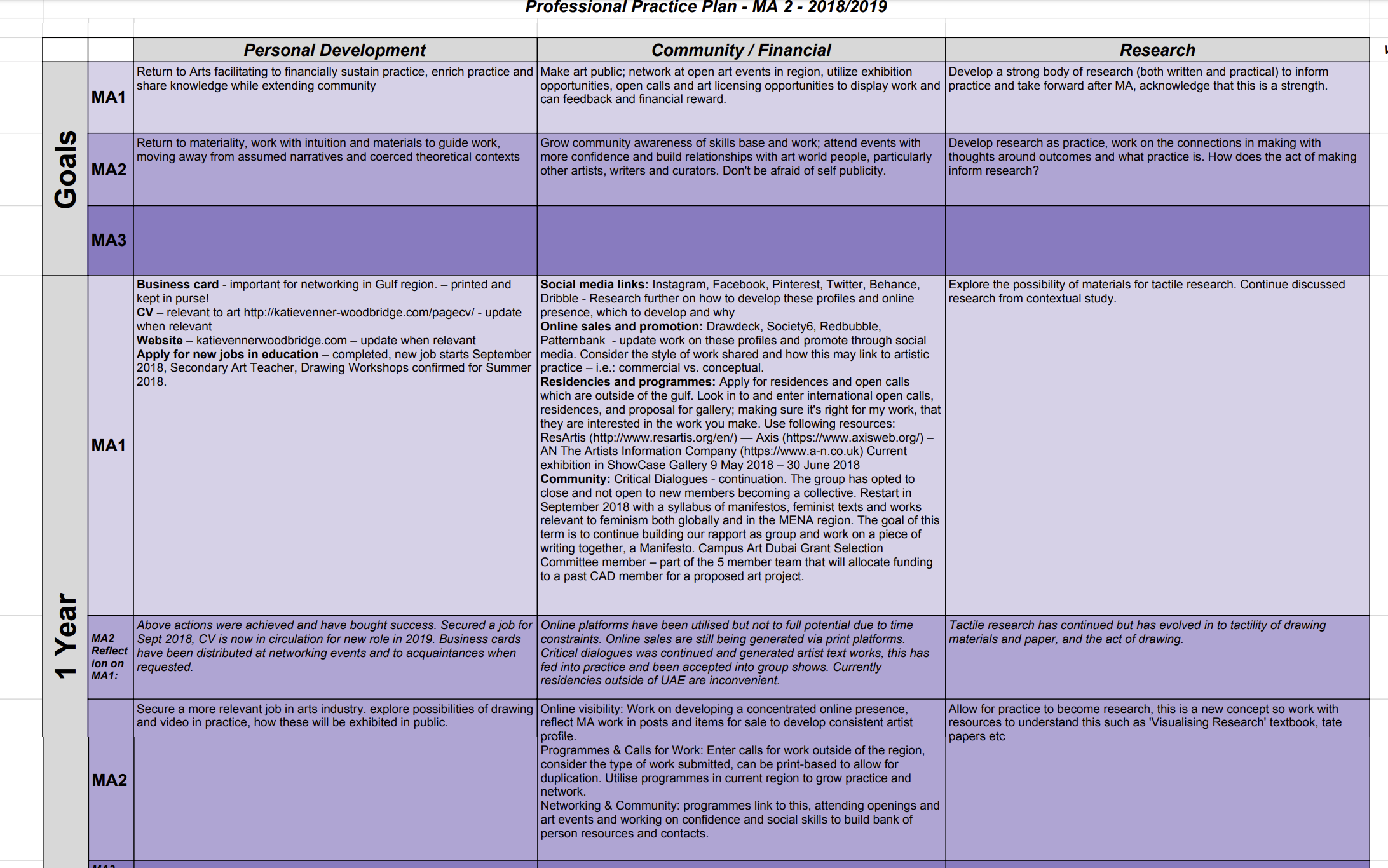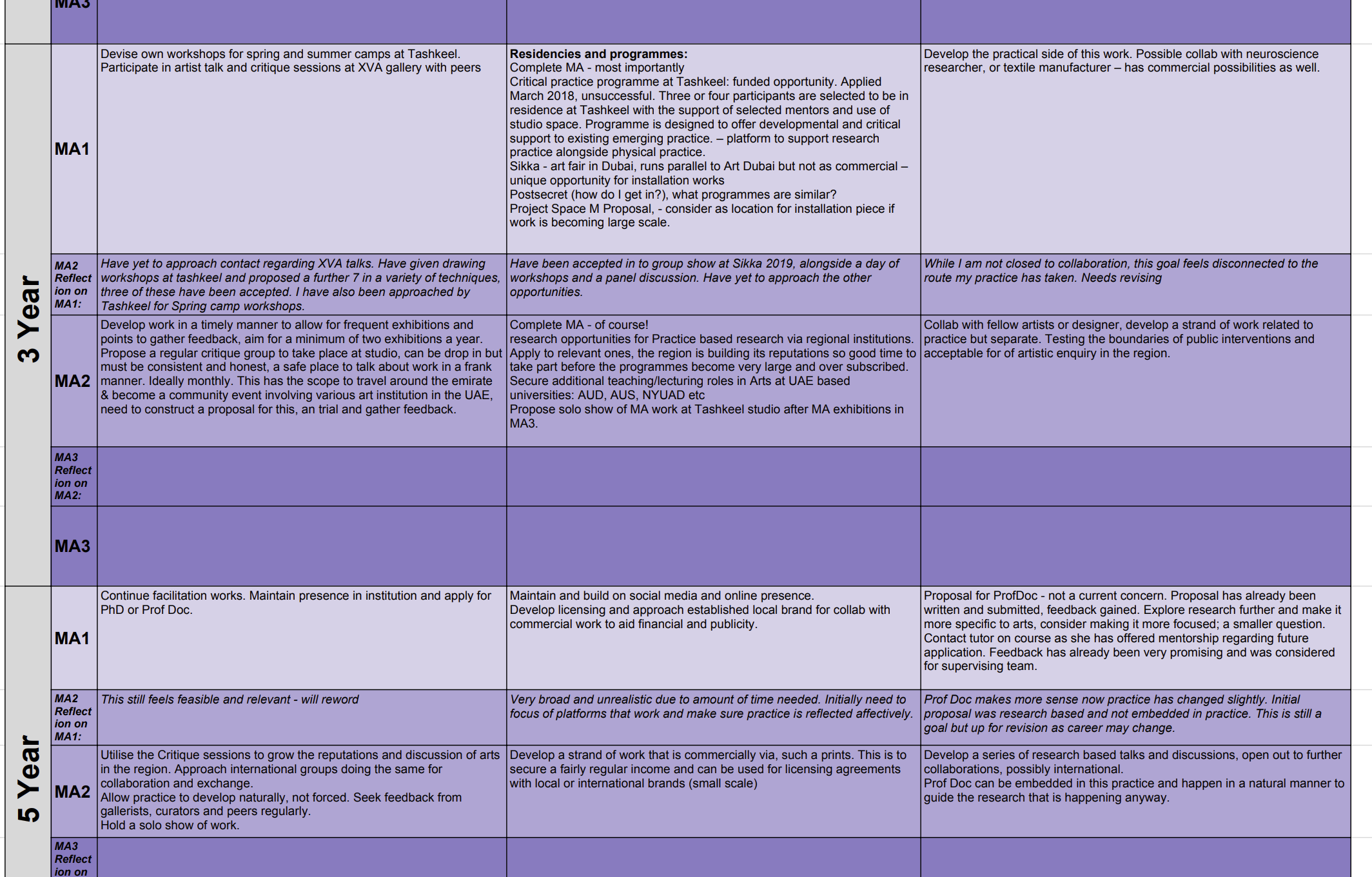A residency in motherhood - outline and structure
Date: Wed, 18 Mar 2020 at 06:16
Subject: Form Submission - Online Planning Tool
To: lenkaclayton@gmail.com
I understand that this form will be submitted to An Artist Residency in Motherhood: I see, that's fine
1. Describe where you are currently with your creative work:
Currently, I can work for between 2hours and 12hours a week, dependent on family and work commitments. I work at home; my lounge has a small corner segregated off with a purpose-built Ikea shelving unit and desk, I have all my equipment and supplies in here too, it's getting a little pressed for space. I like my corner of the room, but I would prefer privacy, it's restrictive and overlooked. I get a lot on interruptions and noise. I'm in the final year of a distance learning Master of Arts in Fine Art based in the UK. I love the work that has come from it, but I would also like to work on art for art's sake for a while and not be structured into writing about it, allow it to be a bit more organic. Parenthood has probably enhanced my practice in that I have to be more structured and focused and work quickly. I feel that the tactility and sensuality that drive my work forward have come from the uncomfortable boundaries that motherhood has exposed and pushed.
2. Describe as specifically as possible, anything about your current situation that makes your creative life difficult:
- privacy - I need a lot of alone time, I'm an only child and I like my space.
- time - Sometimes I just like to sit with work or thoughts and let them undo themselves, or equally I like to fold into what I'm working on, it's hard to do that when you have dinners to prepare or school pickups to carry out.
- finances - art supplies are expensive in this part of the world, as is space and childcare, no family to help means its has to be factored into monthly budgets.
3. What do you need that you don't currently have?
solitude
artist-mother community
visibility
space
3b. For each of the items on your list, what would you need to get each of these things?
- solitude - a studio away from the house/main room of the house, like a little shed!
- artist-mother community - some other mothers that aren't ashamed of their mixed roles, mothers here hide their children, they often have home help which allows them to factor their children out of their practice. I am often judged for not attending events or workshops etc due to childcare issues as my income is lower than many here (i know that I am still in a position of privilege, but its all relevant right?)
- visibility - the arts community is very post-colonial, my white/British/womaness goes against me, there is a lot of assumed privilege, I have had many people say it to my face. Programmes here will favour artists from the MENA region.
- space - as with the solitude, could use a space away from the house.
4. What do you like to do differently during your residency?
not feel ashamed about my struggles with motherhood, or that I am a mother. To not feel self-pity regarding our lower-income and to embrace the restrictions, as much as they frustrate me, and work with them. I would like more FLOW and grace.
5. Describe in a paragraph, where you would like to be with your work after finishing the residency:
I would like to have comfortable confidence in my work, to be able to discuss the ideas behind it and not back down or change the ideas when they are questioned. I am working on finding my language and would like to have that grounded after finishing the residency.
6. Write a manifesto for yourself:
I will not feel guilty for taking time for my work
I will not feel guilty for taking time for thinking
I will not feel guilty for purchasing materials and equipment
I will not be ashamed of choosing motherhood
I will not be ashamed of my struggle with motherhood
I will not be ashamed of being a woman
I will not be ashamed of my heritage, I am not perpetuating the thoughts and ethics of those before me,
I am me and not responsible for my ancestors
I will work when I need to
I will work how I need to
I will communicate with my community
I will own my ideas whilst allowing them to be adaptive as I grow
I will discover my confidence and own that too
I will be strong in my womanhood
I can be intelligent, powerful, creative, innovative, knowledgeable, sensual and a mother.
I can be whoever the hell I wish to embody.
7. Secure the resources you need:
I wish to make affordable art prints from my MA work, these will be available direct from my website and on licensed print sites. I will work on commissions and look into a Patreon/ studiodirect account.
b) Alternatively look at how you might reconsider things you already have access to:
Just writing this out I have already paused to move my studio around to make more space. In the cooler months, I work outside, in the summer months, I will enquire about renting a portion of warehouse space from local business owners/friends. I plan to collaborate with other creatives in my community who are willing to work with me, we are waiting for the MA to be over first. I have developed a couple of mentorship/support partnerships with other parents, dividing childcare/pooling childcare and swapping work with each other for comment.
8. Create a structure for your residency:
I will continue to work in my home studio and the local spaces I have access to free of charge.
Start: 3/22/2020
End: 3/22/2021
How many hours a week will you work?: 7
9. Create accountability for yourself:
I will continue to document on my blog katievw.com which I currently use for my MA but wish to continue. The end date is a week after my birthday and a time for reflection in my life each year.
10. Will you share the work you make?
Via my blog, as it is made; the blog has become a journalling space for free-flowing thoughts and ideas. If there are any other forums or websites where other residents are sharing work I will happily contribute with them.
11. Community & Peers:
As I have previously said, I am lucky in that I have access to other creatives and willing collaborators (how much they will actually collaborate is yet to be seen). I would love to be a part of an ARIM community group if one exists or perhaps I can set on up.
12. How might you begin?
I started the day I found out I was pregnant, now I'm just documenting it formally.
Signed: KATIE L VENNER-WOODBRIDGE
Date: 3/18/2020
Website: website: katievenner-woodbridge.com Blog: katievw.com
Location: Dubai, United Arab Emirates
On the map?: Yes, I'd like to be on the map
(Sent via An Artist Residency in Motherhood)



